Ata-ul-Haye Nasir, Ahmadiyya Archive & Research Centre
Exactly 126 years ago, on 30 November 1898, the Promised Messiah’sas book Raaz-e-Haqiqat (A Hidden Truth) was published, in which he proclaimed that “it has been proven without a shadow of doubt that the grave of Yuz Asaf, situated in Mohalla Khanyar, Srinagar, is in actuality the grave of Jesus, peace be upon him.” (A Hidden Truth, p. 29)
Thereafter, Al Hakam (Urdu) – the Jamaat’s only newspaper at the time – published an article on 15 December 1898, and presented some excerpts from Huzoor’sas book and details of his claim regarding the tomb of Jesusas.
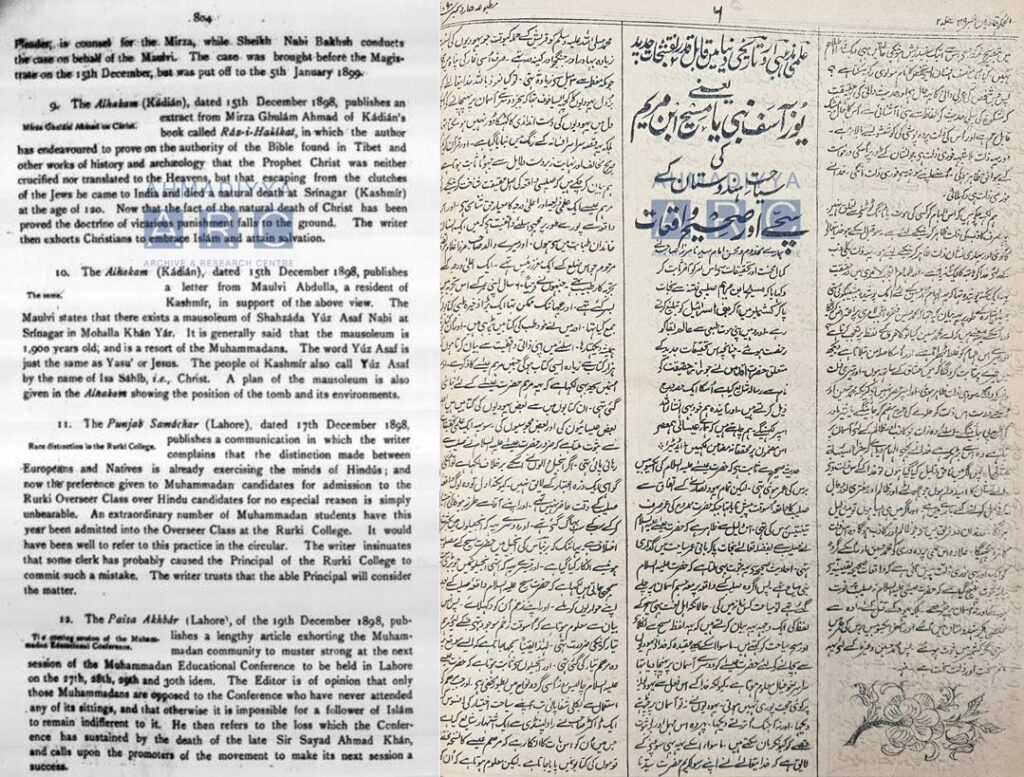
Mentioning this article, The Indian Newspaper Reports gave the heading “Mirza Ghulam Ahmad on Christ” and stated that Hazrat Ahmadas “has endeavoured to prove on the authority of the Bible found in Tibet and other works of history and archeology that the Prophet Christ was neither crucified nor translated to the Heavens, but that escaping from the clutches of the Jews he came to India and died a natural death at Srinagar (Kashmir) at the age of 120.” (Selections from the Vernacular Newspapers [Published in the Punjab], Vol. 11, No. 52, p. 804)
This article aims to show a glimpse into Huzoor’sas claim regarding the tomb of Jesusas in Kashmir as presented in Raaz-e-Haqiqat, along with scans from the sources mentioned by him, and to glance into how the Christian missionaries and their press reacted.
Death of Jesusas and the Christian press
It is important to note that the Christian missionaries were already indulged in bitter opposition to the Promised Messiahas since the 1880s – particularly after his claim that Jesusas had passed away and would never return to this world. Huzooras addressed the Christian missionaries in an ishtihar, dated 20 May 1891, and mentioned the death of Jesusas (Majmu‘ah-e-Ishtiharat, 2019, Vol. 1, p. 242). Thereafter, a harsh reaction erupted from the Christian press in India; Nur-i-Afshan of Ludhiana being at the forefront. In response to this ishtihar, Rev. GL Thakur Das’ article was published on 11 June 1891, containing foul language against the Promised Messiahas, followed by more articles in the 25 June 1891 issue. In addition, The Civil and Military Gazette of 29 July 1891 also used harsh words for Huzooras.
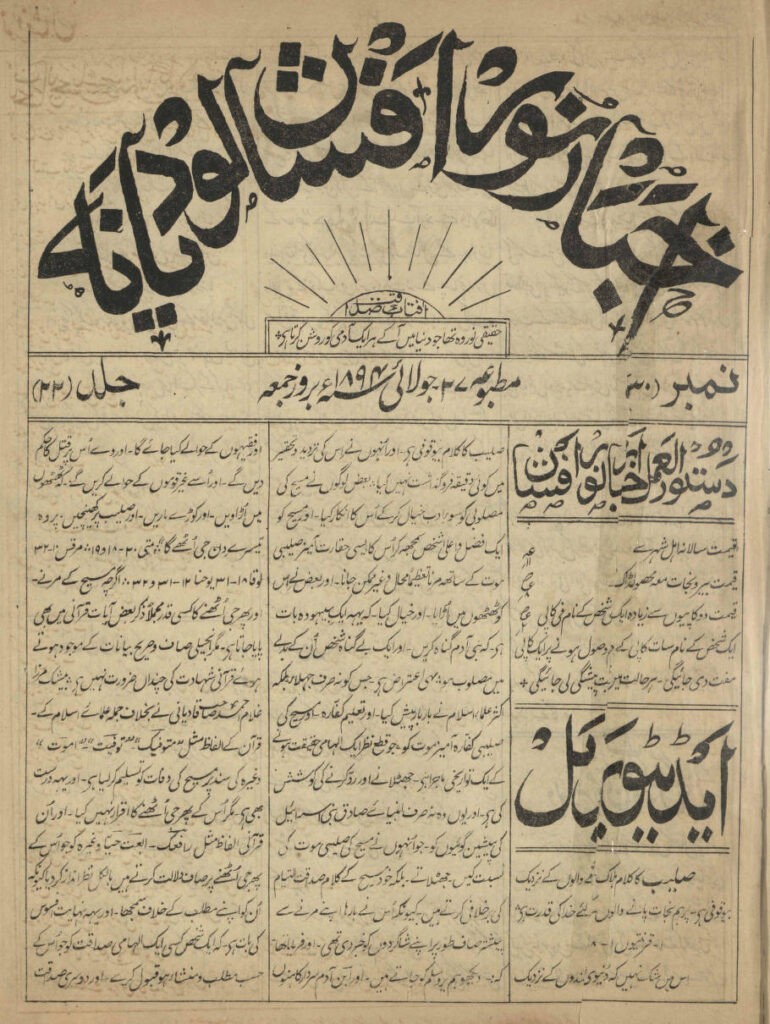
Nur-i-Afshan’s articles got harsher in 1894, containing abusive language against Huzooras, for instance, its editorial dated 27 July 1894.
It wrote, “Mirza Ghulam Ahmad Sahib Qadiani has accepted the death of Jesus on the authentication of the Quranic words such as متوفیک، توفیت، اموت – contrary to the belief of rest of the Islamic scholars.”
This editorial further stated that the Promised Messiahas has written a few couplets about the death of Jesusas.
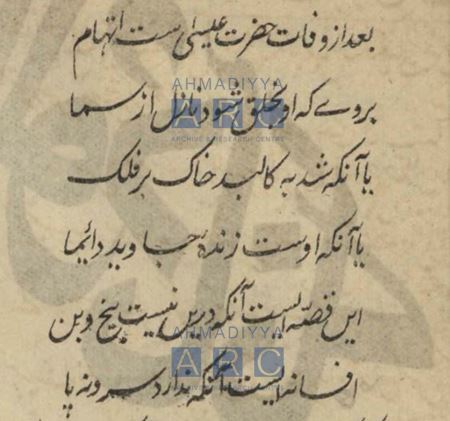
The Christian missionaries and their press continued attacks against Huzooras and, unfortunately, the Muslim clerics too joined their ranks.
Tomb of Jesusas in Kashmir
Let’s move to 1898; the year when Raaz-e-Haqiqat was published. The Christian missionaries made all efforts to refute the Promised Messiah’sas arguments, however, they utterly failed.
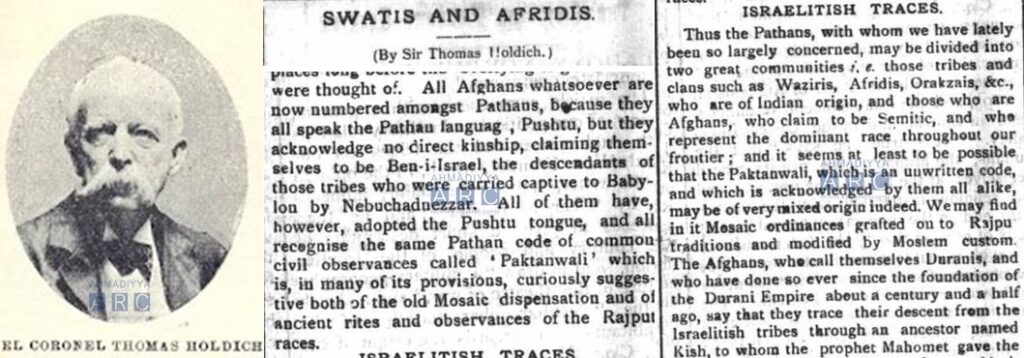
In this book (p. 53), Huzooras mentioned an article by “an English researcher”, published in The Civil and Military Gazette on 23 November 1898, which acknowledged that certain Jewish denominations did indeed migrate to this land.
This article was titled “Swatis and Afridis” (see below), by Sir Thomas Hungerford Holdich (1843-1929), who was an English geographer, President of the Royal Geographical Society and best known as Superintendent of Frontier Surveys in British India. This article was a Paper contributed to the Anthropological Section at a recent meeting of the British Association at Bristol, and was to be read out at a meeting of the Royal Anthropological Institute.
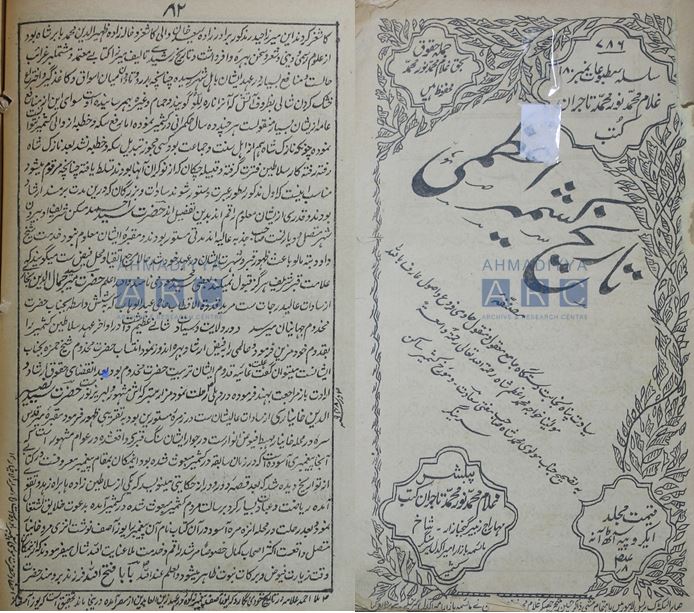
The Promised Messiahas also mentioned an 18th-century book Tarikh-e-Kashmir A’zami (see below) by Khwaja Muhammad Azam Kaul Didamari (d. 1765), which particularly mentioned the tomb of Yuz Asaf and that the local people acknowledged him as a Prince-Prophet who came from a foreign land. (A Hidden Truth, pp. 30-31)
Hazrat Ahmadas alluded to the story that has been narrated in Ayn-ul-Hayat by Allama Majlisi (1627-1699), with reference to Ibn Babawayh’s (923–991) Kamal-ud-Din wa Tamam-un-Ni’mah.
Ibn Babawayh has narrated a story (see the old Persian manuscript below) about Yuz Asaf and Bilauhar – known as Josaphat and Barlaam in other versions of this tale, published in various languages of the East and West.
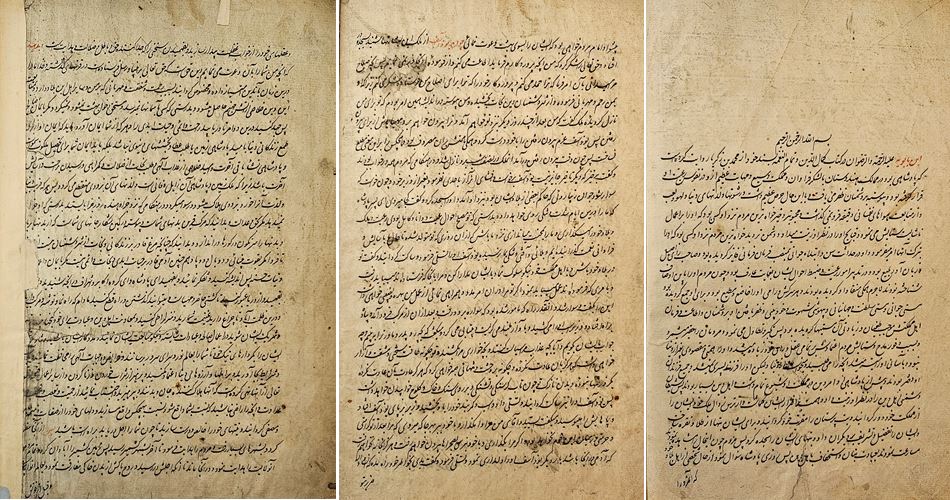
It must be noted that while alluding to these tales, the Promised Messiahas emphasised, “But all these tales are senseless and absurd”, however, “the book does contain truth inasmuch that the author accepts that this Prophet was a traveller and a Prince, who came to Kashmir.” (Ibid., p. 24)
Over the centuries, these tales had been published in various languages and were promoted by the Christians in particular, however, it should be remembered that the Promised Messiah’sas source of information concerning the tomb was not the story of Barlaam and Josaphat.
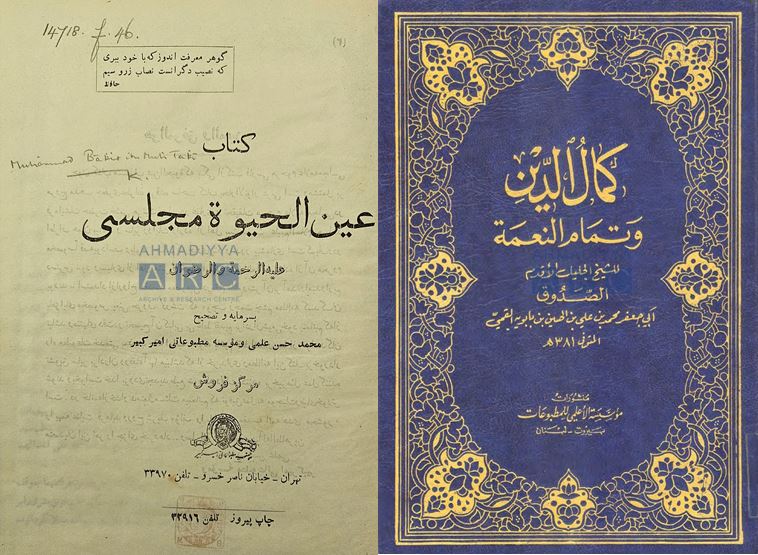
The Promised Messiahas claimed that Jesusas came to Kashmir as the lost tribes of Israel were present here, and this claim is well supported by historical evidence.
Niccolao Manucci (1638-1717), a Venetian Physician who served the Mughal Empire, narrated about Kashmir in his Portuguese memoirs, titled Storia Do Mogor (see scans below). Its French and English versions were published in 1708 and 1907, respectively. He states:
“There is an old tradition that the Jews who were held captive by Shalmaneser settled in Kashmir, and that the people of that country are the descendants of those Jews. It is certain,” that “there are several vestiges of a race descended from the Israelites. The air of the face, and the looks of the present inhabitants, have something of what is peculiar to the Jews, which distinguishes them from all other people. Moses is a very common name there; and some ancient monuments, still to be seen, reveal them to be a people coming out of Israel.” (Histoire Generale de l’Empire du Mogol, 1708, p. 186)
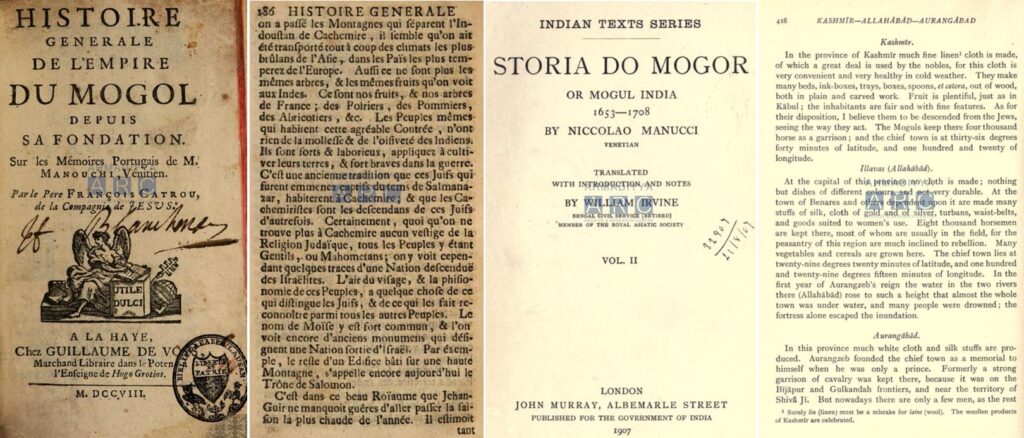
A Muslim historian, Al Biruni (973-1048), also mentioned the connection between Jews and Kashmir (see scans below). Al Biruni states:
و أهل كشمير ۔۔۔۔ یعتھدون حصانۃ الموضع فيحتاطون دائما فى الاستيتاق من مداخلها و دروبها ولذلك تعذرت مخالطتهم وقد كان فيما مضى يدخلها الواحد والاثنان من الغرباء و خاصة من اليهود والآن لا يتركون هنديّا مجهولا يدخلها۔
“The people of Kashmir […] are vigilant about the protection of their area, always taking precautions to ensure the safety of the entrances and roads leading into it. As a result, it has become difficult to mingle with them. In the past, one or two foreigners, especially the Jews, could enter freely, but now they do not [even] allow any unknown Indian to enter.” (Taḥqīq mā li-l-hind min maqūlah maqbūlah fī al-ʿaql aw mardhūlah, pp. 165-166)
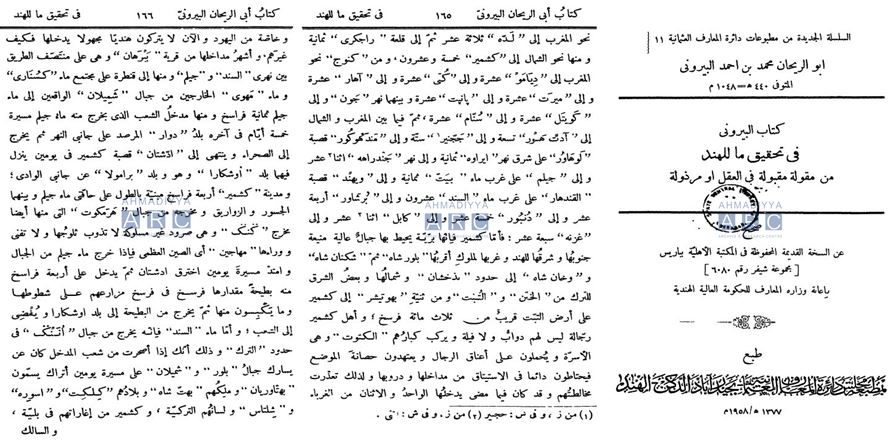
A British traveller, George Forster (d. 1792), mentioned his visit to Kashmir and wrote, “On first seeing these people” he imagined as if he “had come amongst a nation of Jews.” He further stated that “the same idea impressed also Mr. Bernier, who carrying it further, has attempted, by the aid of some proofs more spacious than substantial, to deduce their origin from the Jewish tribes that were carried into captivity.” (A journey from Bengal to England…., 1798, Vol. 1, pp. 20-21)
In Raaz-e-Haqiqat, Huzooras alluded to the above-mentioned French traveller, Dr. Francois Bernier (1620-1688), whose impressions of Kashmir were narrated in his travelogue, wherein he presented signs of the Jewish imprint in Kashmir (see scans below) and stated that “upon entering this Kingdom” i.e., Kashmir, “the inhabitants in the frontier villages struck me as resembling Jews.” (Voyages de Francois Bernier, 1723, p. 317)
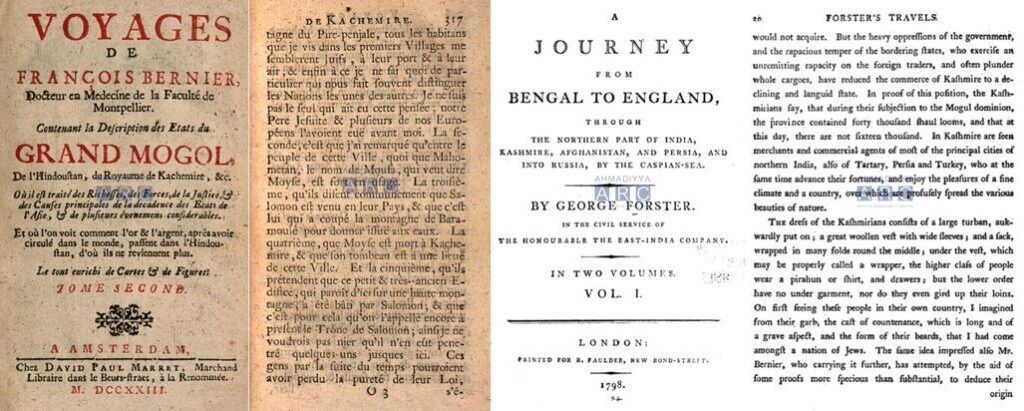
Elaborating as to why Jesusas travelled to Kashmir, the Promised Messiahas stated in one of his articles that “Jesus, who himself had stated it to be his duty to go to the scattered sheep of the house of Israel and preach to them the Word of God, could not go to heaven before he had completely discharged his duty.”
Huzooras raised a pertinent question: was it not far better for Jesus to trace the footsteps of “his dispersed people” who had settled in different lands, as “only in this case would he have deserved the glorious title of the ‘Travelling prophet’ which is usually given to him”? (The Review of Religions, Vol. 2, September 1903, p. 337)
In Raaz-e-Haqiqat, the Promised Messiahas also mentioned an article (see below) published in The Muhammadan Anglo-Oriental College Magazine about the story of Yuz Asaf and Bilauhar. The article implied that parts of this story highlighting the Christian teaching have been added later by the Christian missionaries and that Yuz Asaf was merely a Buddhist reformer. However, Huzooras refuted this notion. Interestingly, the article stated:
“It is a very peculiar point that even today there exists a very ancient tomb in the land of Kashmir, which is known as the tomb of the Prophet Yuz Asaf.” (The Muhammadan Anglo-Oriental College Magazine, Vol. 4, No. 9, September 1896, p. 387)
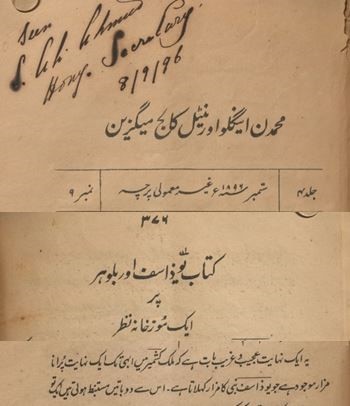
In 1899, the Promised Messiahas wrote another book, Masih Hindustan Mein (Jesus in India) – published in 1908 – and reiterated his claim about Jesusas in Kashmir and the fact that the lost tribes of Israel had migrated to these lands.
Rev. Claudius Buchanan (1766-1815) – a Scottish theologian and an evangelical missionary for the Church Missionary Society – lived in India and carried out thorough research on the lost tribes of Israel. He has written in length about the presence of Jews in Persia, India and Afghanistan, and found multiple Hebrew manuscripts as well. He stated that the Jews “communicated to me much interesting intelligence concerning their brethren the ancient Israelites in the East; traditional indeed in its nature, but in general illustrative of true history. They recounted the names of many other small colonies resident in northern India, Tartary, and China; and gave me a written list of Sixty-Five places.” (Christian Researches in Asia, 1811, p. 222)
In Jesus in India (p. 79), while elaborating on the route undertaken by Jesusas during his journey to Kashmir, the Promised Messiahas said that the object of his journey was to meet the Israelites who were taken captives to Media. The above-mentioned Christian missionary has stated that during the 1st century A.D. “the Ten Tribes were” present as “captive in Media under the Persian Princes.”
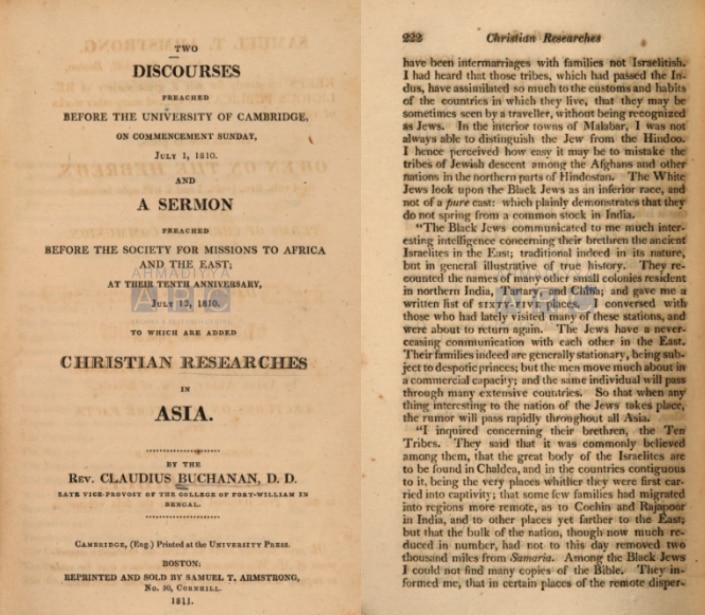
The author states that the local Jews told him that “the great body of Israelites are to be found in Chaldea” – a small country that existed between the 10th and 6th centuries B.C. and later assimilated into the indigenous population of Babylonia – and “in the countries contiguous to it, being the very places wither they were first carried into captivity.” Moreover, some had migrated to more remote places such as “Cochin and Rajapoor in India, and to other places yet farther to the East.” (Ibid., p. 222)
He further mentions the Jews of “the Provinces of Cashmire and Affghanistan” and states that a minority of those Jews are still firm in their faith, however, the majority have converted to other religions. He concluded, “The fact; seems to be, that, if from Babylon as a centre, you describe a segment of a circle, from the northern shore of the Caspian Sea to the heads of the Indus, you will enclose the territories containing the chief body of the dispersed tribes of Israel.” (Ibid., pp. 230-231 and 239)
In his work Mafatih-ul-Ulum (see scans below), Abu Abdullah Muhammad ibn Ahmad ibn Yusuf al-Khorezmi (d. 997) has mentioned Yuz Asaf as a prophet of Chaldeans. The oldest manuscript of this work was scribed in Baghdad in 556 Hijri, which states:
والکلدانیّون ھم الذین یسمّون الصابئین والحرنانیّین وبقایاھم بحرّان والعراق ویزعمون انّ نبیّھم یُوزاسف الخارج فی بلاد الھند وبعضھم یقولون ھرمس۔۔۔۔۔ فاما الصابئون على الحقيقة ففرقة من النصارى
“The Chaldeans are those who are called the Sabians and the Harranians, and their remnants are in Harran and Iraq, and they claim that their Prophet is Yuz Asaf who came to the land of India, and some of them say Hermes. […] As for the Sabians, they are in reality a sect amongst the Christians.” (Mafatih-ul-Ulum, Scribed by al-Mubarak b. Sadaqah al-Bakharzi, p. 23 [courtesy of Leiden University Libraries])
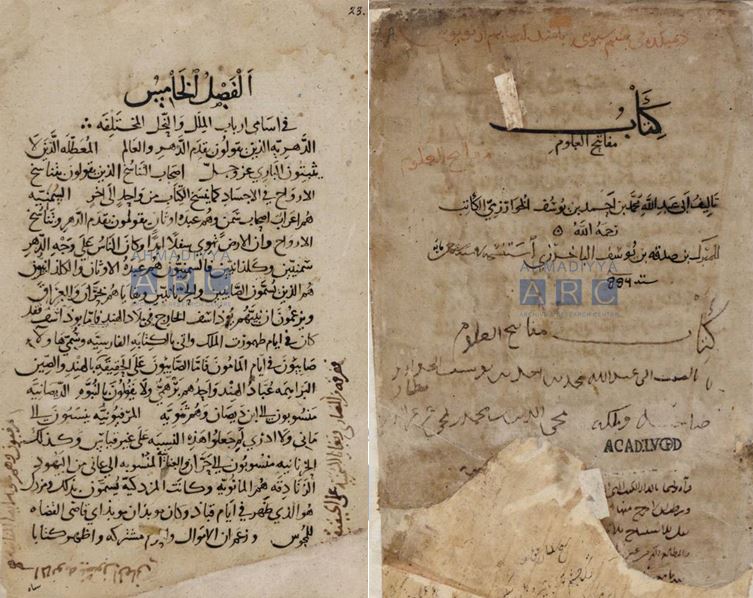
1900-1903: A spike in Christian reaction
The year 1900 was a time when the Christian missionaries and their press intensified their hostility against Huzooras. For instance, Nur-i-Afshan’s article, dated 6 April 1900, addressed Huzooras and wrote, “You have staunchly opposed Jesus; it is incumbent upon you to believe Jesus the Messiah to be God, and accept him in order to attain a life.” The author continued by using a harsh tone and wrote that in the past, the deniers of Jesus had received a strong response from the Christians and punishment from God as well. This clearly depicted the level of grudge they held against Huzooras.
Among the prominent Christian missionaries who debated on the subject of the tomb was Herbert Udny Weitbrecht (1851-1937), the Chief Reviser of the Urdu New Testament from 1894-1899. In 1901, his articles were published in The Civil and Military Gazette about the tomb.
The debate about the tomb was intensifying and meanwhile, the Promised Messiah’sas book Kashti-e-Nuh (Noah’s Ark) was published in 1902, wherein he reiterated his claim about the death and tomb of Jesusas. Interestingly, he also quoted an article of Corriere della Sera of Italy which mentioned that a manuscript of Saint Peter had been discovered from Jerusalem. (Noah’s Ark, pp. 122-123 [Footnote])
The date of the said newspaper was not mentioned in Noah’s Ark, however, the content suggests that it must have been published after 13 July 1879. Hence, upon some research, the Ahmadiyya Archive and Research Centre has found an issue of Corriere della Sera, dated 1 April 1880, which published an article similar to the one quoted by the Promised Messiahas. The article was titled “A Manuscript of Saint Peter”. According to The Leeds Mercury of 26 March 1880, the story “appeared originally in the Sabaoth, a journal printed at Jerusalem.”
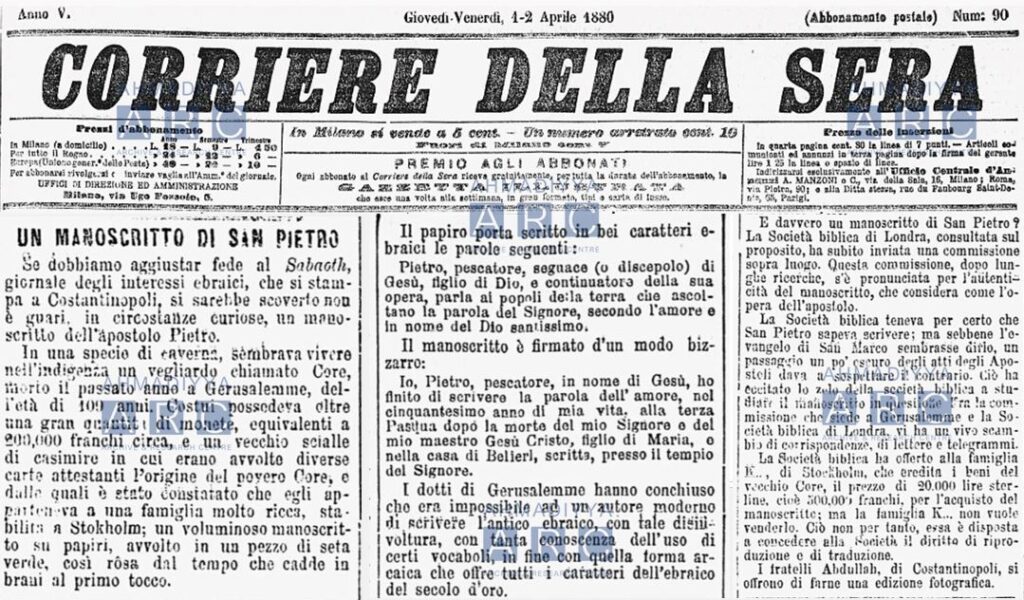
In June 1902, another book of the Promised Messiahas was published, titled Al Huda wa Tabsiratu Liman Yara wherein he mentioned the tomb of Jesusas and indicated the stories narrated in Kamal-ud-Din wa Tamam-un-Ni‘mah and stated that the Christians too claim that Yuz Asaf was a disciple of Jesusas. (Ruhani Khazain, Vol. 18, p. 361)
Meanwhile, the tomb continued to attract attention from the press and the Christian reaction intensified too. Unfortunately, the Muslim clerics were also leaving no stone unturned in opposing the Promised Messiahas. Maulvi Sanaullah Amritsari made harsh attacks against Huzooras in his book Ilhamat-e-Mirza and the Christian press promoted this book in their articles. For instance, on 31 January 1902, The Nur Afshan [English] published a review of this book and wrote that “the author of Ilhamat-i-Mirza is to be congratulated” and also used abusive language towards the Promised Messiahas.
The press was continuously mentioning the Promised Messiah’sas claim about the tomb. For instance, an article was published in The Civil and Military Gazette on 15 January 1903. Weitbrecht’s articles were published by The Epiphany – a Christian magazine of Calcutta, which claimed to have visited the tomb in Kashmir and then, based on that visit, built up his narrative contrary to Huzoor’sas claim. The foreign periodicals also reported on Huzoor’sas claim, for instance, The Falkirk Herald and Midland Counties Journal of Scotland, dated 28 October 1903. An Arabic Christian magazine of Beirut – Al Hilal – also indulged in this debate.
During a sitting on 9 July 1903, the Promised Messiahas was informed about some Christian periodicals which were expressing that the tomb in Kashmir did not belong to Jesusas, but rather, to one of his disciples or followers. Huzoor’sas response to this has been recorded in Malfuzat (Vol. 6, p. 50) and also in one of his articles, published in 1903, wherein he emphasised:
“Every unprejudiced mind will be of [the] opinion that Yus Asaf was no other than Jesus himself. If the Christians cannot accept him on this evidence as the same prophet Jesus,” then surely, “the burden of proof lies on them to show that any disciple of Jesus was known as a prince-prophet or that any one of his disciples ever represented the teachings of Jesus as being his own and called them his own Gospel. Such a proof is however far from being in their hands, for none, but Jesus, son of Mary, was ever called Shahzada-Nabi or prince-prophet.” (The Review of Religions, Vol. 2, September 1903, pp. 337-338)
Rev. Weitbrecht’s article in The Epiphany
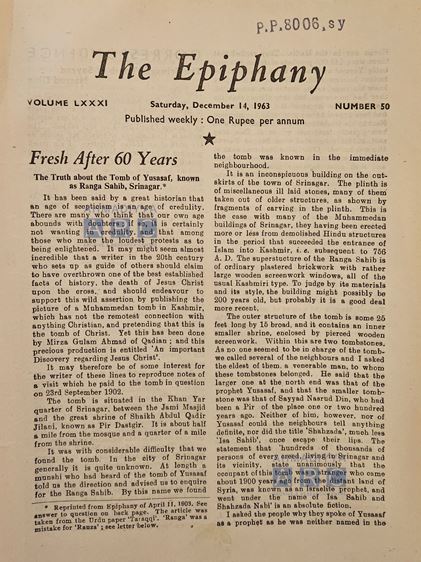
From now onwards, the article will focus on Weitbrecht’s articles of 1903. The Epiphany published an unnamed article on 11 April 1903 that was originally published in an Urdu magazine Taraqqi of Lahore. The English version was titled “The Truth about the Tomb of Yusasaf, known as Ranga [sic., Rauza] Sahib, Srinagar”. A later article of The Epiphany revealed that it was in fact authored by Weitbrecht.
Weitbrecht narrated his visit to the tomb on 23 September 1902 and after elaborating on its structure and historicity, he asserted that it was not the tomb of Jesusas, but rather, a shrine of a Muslim saint. However, he mentioned that upon asking an elder from the neighbours about the two tombs located there, he was told that “the larger one at the north end was that of the prophet Yusasaf, and that the smaller tombstone was that of Sayyad Nasrud Din, who had been a Pir of the place one or two hundred years ago.” (The Epiphany, 11 April 1903, Reprinted in the issue of 14 December 1963)
Quoting an article from The Review of Religions of October 1902, titled “An Important Discovery Regarding Jesus Christ”, Weitbrecht asserted that “it is an absolute fiction”. However, he mentioned that the local inhabitants told him that “the man under the larger of the tombstones had been proved to be a prophet by his miracles.” In order to negate this testimony, he wrote that the tomb “had recently been visited by followers of the Mirza Sahib” and asserted that they tried to impress upon the locals that it was the tomb of a prophet called Yusasaf. He implied, “If, however, the saint’s name was Yusasaf, there is not a shred of real evidence to connect him with the historical Christ.” (Ibid.)
Response from Hazrat Maulvi Sher Alira
In response, Hazrat Maulvi Sher Alira wrote an article, titled “The Tomb of Jesus”, and stated that “the writer mostly accepts the facts published by the Mirza Sahib, and where he disagrees, he offers no reason for his disagreement. He admits that the tomb is known as that of a Prophet or a Nabi, and that one of the names by which the occupant of the tomb is known is Yus Asaf. Admitting both these facts, he is of [the] opinion that the person who is known as Yus Asaf was a Muhammadan Saint of Cashmere who died not more than 200 years ago.” (The Review of Religions, Vol. 2, May 1903, pp. 197-198)
The article provided a detailed refutation of Weitbrecht’s arguments. Mentioning the story of Barlaam and Josaphat, it was argued that Yuz Asaf was canonised as a saint (see the scans below) and that “there may be much of fiction mingled in the stories of Joasaph or Yuz Asaf, but they certainly refute the assumption that Yuz Asaf was a Muhammadan Saint and that he lived not more than 200 years ago.” (Ibid., p. 199)
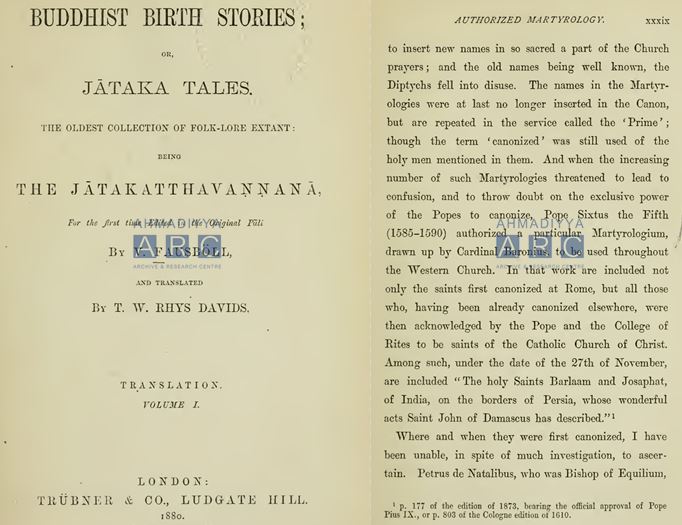
Yuz Asaf was canonised as a saint in the 16th century, as we find that “Pope Sixtus the Fifth (1585-90) authorized a particular Martyrologium,” which included “not only the saints first canonized at Rome, but all those who, having been already canonized elsewhere, were then acknowledged by the Pope and the College of Rites to be saints of the Catholic Church of Christ. Among such, under the date of the 27th November, are included ‘The holy Saints Barlaam and Josaphat, of India, on the borders of Persia, whose wonderful acts Saint John of Damascus has described.’” (Buddhist Birth Stories; Or Jataka Tales, 1880, p. xxxix)
Al Hilal’s articles and the Promised Messiah’sas response
In his article, Sher Ali Sahibra had presented an excerpt from Al Hilal’s article (see scans below), published in April 1903, titled “قشمیر و امیرھا”, which stated:
و فی حارة تسمى الخانيار فى هذه المدينة قبر يسميه القشامرة قبر النبي يوزآسف یزوره العوام والخواص و فی بعض كتب التاریخ عندھم ان يوزآسف هذا كان نبياً من الانبياء جاء من اقصى البلاد فمات ودفن فى هذه المدينة فزعم رجل فنجابی ان هذا النبي هو المسيح
“In a neighbourhood called Khanyar in this city [Srinagar], there is a grave that the Kashmiris call the grave of the prophet Yusasaf, which is visited by the common and the elite people alike. In some of their history books it is stated that Yusasaf was one of the prophets who came from the farthest lands and died and was buried in this city. A Punjabi man [the Promised Messiahas] claimed that this prophet was the Messiah [Jesusas].” (Al Hilal, Beirut, April 1903, Vol. 11, Number 13, pp. 387-388)
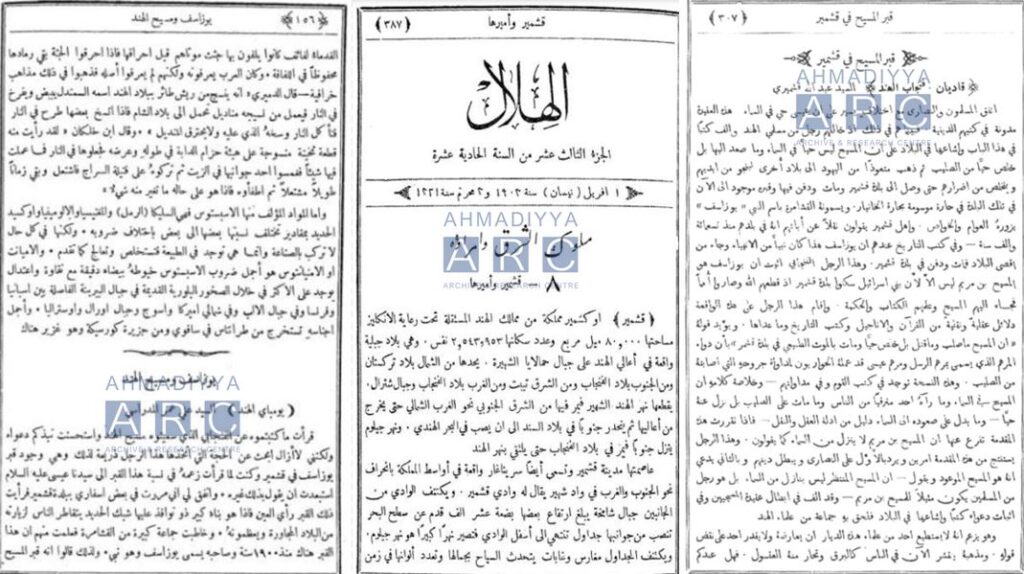
The above-quoted words were followed by the editorial statement that they have already “refuted” the Promised Messiah’sas claim. Hence, upon glancing through the previous issues of Al Hilal, we find an article that was published in February 1902, titled “قبر المسیح فی قشمیر”. More articles were published in May, June and December 1903 issues, mentioning Huzoor’sas claim about the tomb.
Responding to the articles of Al Hilal, the Promised Messiahas stated in one of his articles that the Editor of the said magazine denies the burial of Jesus at Srinagar, however, “it is neither just nor reasonable that facts which have been demonstrated to be true, should be rejected only from religious prejudice.”
Huzooras emphasised, “The truth is that the story of Jesus’ ascension to heaven is so plainly absurd that no evidence is required to disprove it. Even if the evidence and facts which we have stated above, had not been stated, the judgment of reason would have been against the ascension of Jesus.” (The Review of Religions, Vol. 2, September 1903, p. 340)
Another article from Weitbrecht
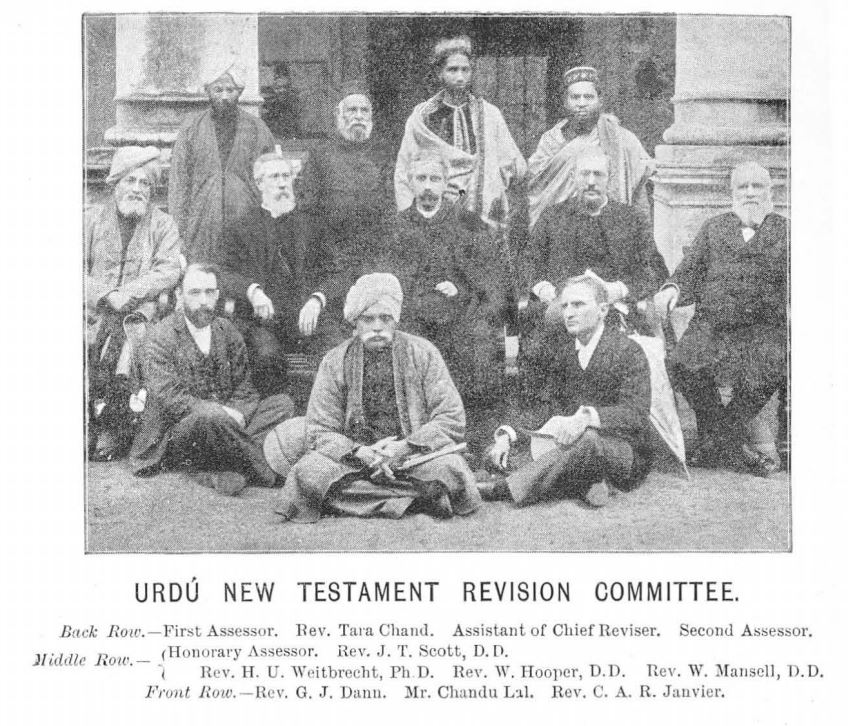
Weitbrecht wrote another article, published in The Epiphany on 27 June 1903, titled “Correspondence: The Srinagar Tomb of Sayyad Nasrud Din”, and stated:
“In the May number of the Qadian Review of Religions there is a letter of over five pages in reply to your English version of my article in Taraqqi (April 1903) on this subject. The writer is kind enough to regard my article as the work of an Indian Christian. […] But as he makes much of the fact that the article in your No. of the 11th April is unsigned I have pleasure to put my name under this.”
He further states that “the substance of the letter in the Review of Religions amounts to these propositions:
“(1) My article is said to admit that the tomb is known as that of a prophet Yusasaf.
“(2) The fact that he is reputed as a prophet among Mohammedans proves that he appeared before the time of Mohammed.
“(3) The very modern nature of the tomb does not prove that the grave is not very ancient.
“(4) Yusasaf is identical with Josaphat, a cryptic saint of the Roman and Greek calendars, whose story is told by John of Damascus, and Josaphat again is identical with Jesus of Nazareth.” (The Epiphany, 27 June 1903, Reprinted in the issue of 14 December 1963)
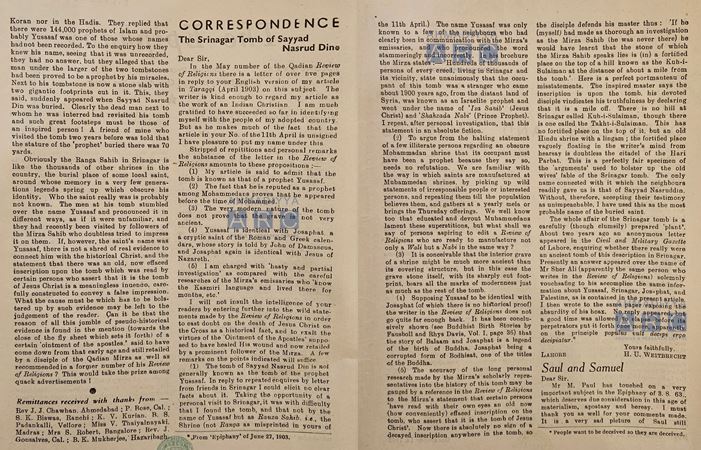
He then attempts to refute the arguments presented in the article by The Review of Religions. Having failed to refute the Promised Messiah’sas claim, the Christian missionary states towards the end, “The whole affair of the Srinagar tomb is a carefully (though clumsily) prepared ‘plant.’” (Ibid.)
How ironic is this that upon failing to prove his stance, he just declared the Promised Messiah’sas claim to be a “carefully prepared plant”. This truly summed up his theological and historical incompetence, and was a confession of his inability to refute Huzoor’sas arguments.
Another response to Weitbrecht
In response to Weitbrecht’s above-quoted article, Hazrat Maulvi Sher Alira wrote that the “discovery of the tomb of Jesus at Srinagar seems to have thrown the Christian Missionaries of India into consternation” and then refuted the arguments presented by Weitbrecht. After presenting a parable quoted in Joseph Jacobs’ Barlaam and Josaphat: English lives of Buddha (see below), he stated:
“The foregoing parable is identical with the parable of the sower in Matt. XIII, 3; Mark, IV, 3; and Luke, VIII, 5.
“On the one hand, we find Yus Asaf giving the name Bushra or Gospel to the book which was revealed to him by God, and on the other, we find parables and sayings in the story of Yus Asaf which are the same as attributed to Jesus in the Christian Scriptures. These two facts clearly identify Yus Asaf with Jesus.” (The Review of Religions, Vol. 2, November-December 1903, p. 463)
Sher Ali Sahibra continued:
“Rev. Weitbrecht asserts that there is no evidence to prove the identity of Yus Asaf with Josaphat whose story is translated in almost all the languages of Europe. It is indeed strange that gentlemen like Mr. Weitbrecht should make such absurd statements. Is he not aware that the Oriental versions of the story of St. Josaphat contain Yus Asaf instead of Josaphat? What other proof does he require of the identity of Yus Asaf with Josaphat? The same story which is related of St. Josaphat is related of Yus Asaf, which is the most convincing proof that Yus Asaf and Josaphat are one and the same person.” (Ibid.)
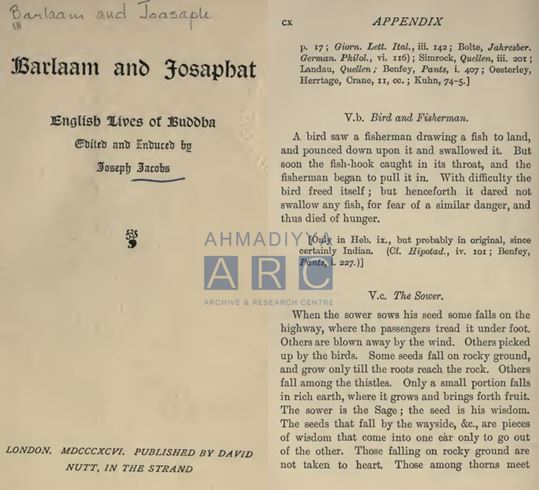
In this regard, the Promised Messiahas has also stated that “Yus Asaf was the name of a prophet whose time is exactly the same as that of Jesus and who came to Cashmere after a long journey. He was not only known as a Nabi (prophet) but also as a Shahzada (prince). It is moreover stated that he came from Syria, the country in which Jesus lived. His teachings also have a striking resemblance with the teachings of Jesus, so much so that some of the parables and phrases of his book are the same as those which are still to be met with in the Gospels.
“These facts and similarities are so striking that even the Christians have been obliged to admit that the person who went under the name of Yus Asaf and prince-prophet was one of the followers of Jesus. It is for this reason that he is held in such great honor, and a church has been erected in honor of his name in Sicily. It was also on account of the close resemblance of Yus Asaf with Jesus that the story of Yus Asaf was translated into almost all the languages of Europe and read so vastly.
“The zeal with which Christian Europe worked and the interest which it took in spreading the story of Yus Asaf, is in itself a strong evidence that if the Christians never recognised the actual identity of these two personages, they at least admitted a strong and close connection between them and took Yus Asaf for a disciple of Jesus if not for Jesus himself.” (The Review of Religions, Vol. 2, September 1903, pp. 337-338)
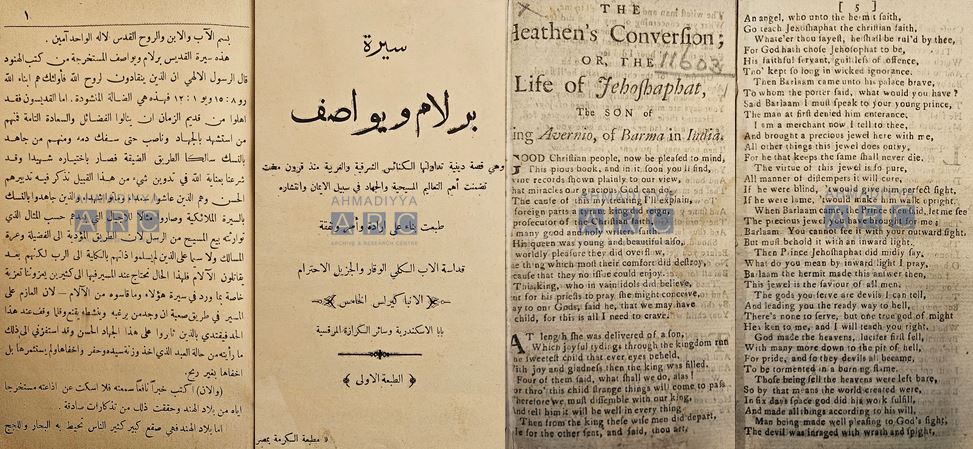
Conclusion
This debate continued in the following years as well and is a subject of great significance even today. However, this article does not intend to indulge in those details since it only aims to present a glimpse of the early years of this debate. The Promised Messiah’sas claim still stands and is supported by solid arguments and historical records. The Christians are unable to refute the arguments of this Champion of Islam to date.


